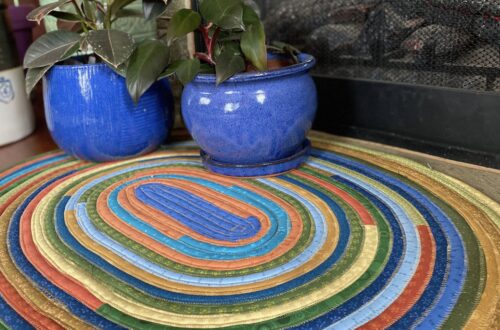All Things Japanese
Here are some excerpts from Clover’s Japanese newsletter.
In last month’s newsletter, we introduced about Japan’s “Setsubun” rituals. We’d like to tell you about the Hina (Girls’) Festival, held on March 3.
 It is still cold when Setsubun is held (on February 3), but by the time the Hina Festival comes around (on March 3), the sunlight has gotten a little warmer, and one can almost hear spring’s approaching footsteps.
It is still cold when Setsubun is held (on February 3), but by the time the Hina Festival comes around (on March 3), the sunlight has gotten a little warmer, and one can almost hear spring’s approaching footsteps.
During that time, when spring is almost in the air, the Hina Festival is held to pray for young girls’ growth. The ritual has been around for approximately 1,000 years. At that time, medicine was not nearly as progressed as it is now, and many children died at a young age. As a way of protecting children from sicknesses and misfortune, a human form was created from paper or grass and floated down the river, with the idea of putting those sicknesses and misfortunes onto it. Those dolls, that at first were crudely formed from paper or grass, gradually took more elegant shapes, and rather being floated down the river, they were displayed as hina ningyo (hina dolls) during the Hina Festival.
Hina dolls are dolls made in the form of boys and girls, as well as court ladies and traditional musicians. Boy dolls symbolize the Emperor and girl dolls the Empress, and both are adorned in the dress of the Heian Period, which was about a thousand years ago. Because hina dolls are expensive, they are passed down from parent to child, and on to the child’s children. Prayers for a child’s happiness are therefore passed down from parent to child to further descendants through hina dolls.
In addition, peaches are displayed along with hina dolls (below). The Hina Festival was held during the peach blossom season in the ancient calendar, and was also called the “Festival of Peaches” for that reason.
 These days, the first festival after a child is born is celebrated as the “first festival”. Among the many observances of Japan’s long history, the Hina Festival is very beloved by women, and embodies the Japanese spirit.
These days, the first festival after a child is born is celebrated as the “first festival”. Among the many observances of Japan’s long history, the Hina Festival is very beloved by women, and embodies the Japanese spirit.
From a handicraft perspective, there are many craft enthusiasts who hand-make hina dolls as part of their doll making, in addition to quilts that use hina doll motifs.
As we mentioned, the Hina Festival features the peach blossom, rather than the sakura (cherry), though the latter is one of Japan’s official flowers and as well as a symbol of spring. This is said to be because the peach brings forth an abundance of fruit, making it a symbol of life force. It may seem strange that the sakura is not displayed during the Hina Festival despite its national symbol-status.
Speaking of national flowers, many countries have the rose as theirs. We will later introduce a tool (new product) that lets users easily create a rose motif using fabric.



